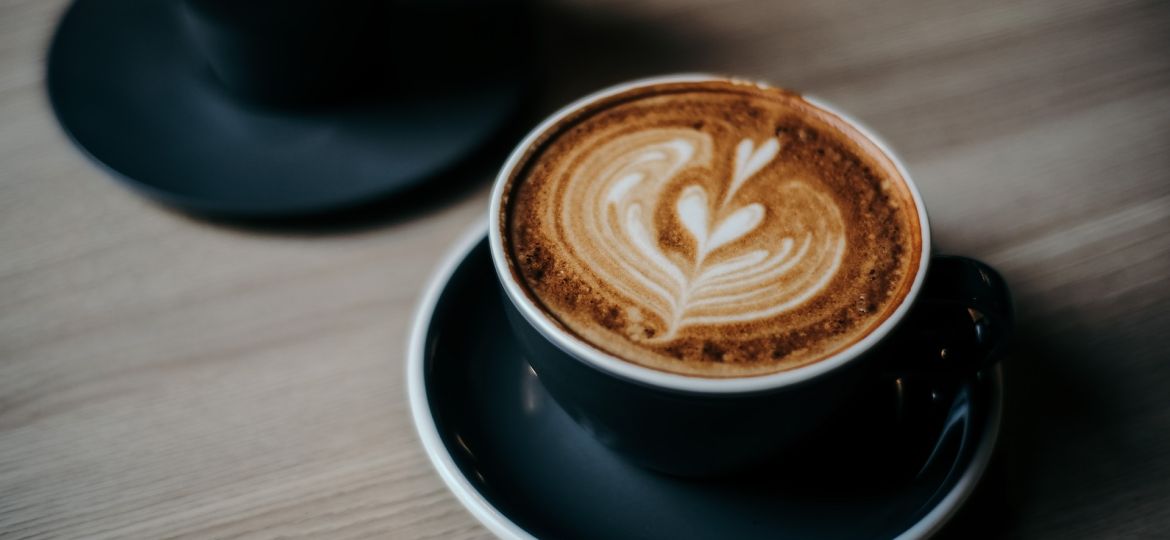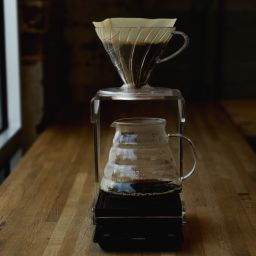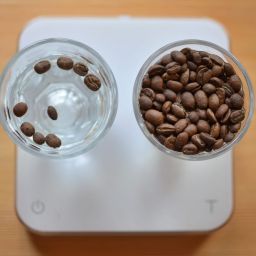
Lattes have become a staple in coffee culture around the world, but their journey to popularity is as rich as their flavor. Originating in Europe, the latte, or caffè latte in Italian, literally means “milk coffee”. Its rise to fame began as it became a breakfast favorite in Italy and later, a canvas for artistic expression in coffee shops globally. Today, lattes are not just a drink but a symbol of modern coffee sophistication.
What is a Latte?
A latte is more than just espresso with milk. It’s a harmonious blend of rich, bold espresso and creamy, steamed milk, creating a comforting and indulgent experience. The classic latte composition involves:
- One-third espresso: The strong coffee base
- Two-thirds steamed milk: For a smooth and velvety texture
- A thin layer of milk foam: Adding a light and airy touch
The espresso to milk ratio is crucial in a latte. It’s this balance that differentiates a latte from other coffee drinks, offering a milder coffee flavor that’s perfect for those who prefer a less intense coffee experience.
Latte vs. Cappuccino
While both lattes and cappuccinos share the same basic ingredients – espresso, steamed milk, and foam – it’s the proportion of these elements that sets them apart:
- Lattes: More milk, less foam
- Cappuccinos: Equal parts of espresso, milk, and foam, leading to a stronger coffee flavor and a more pronounced foam layer
Understanding this difference helps in appreciating the unique qualities of each drink and why they cater to different taste preferences.
Choosing the Right Milk for Lattes
The milk in a latte is not just a filler; it’s a key player in the drink’s texture and taste. Here’s how different types of milk can affect your latte:
- Whole Milk: Offers the best balance of fat and proteins, creating a creamy and rich texture
- Skim Milk: Produces more foam but with a less creamy taste
- Two Percent Milk: A middle ground between whole and skim milk
For those seeking non-dairy alternatives, oat milk is a popular choice due to its creamy texture and slight sweetness, closely mimicking the properties of cow’s milk in lattes. Almond and soy milk are also good options, though they behave differently when steamed.
Essential Equipment for Making Lattes
To whip up a perfect latte, you don’t need a fancy coffee shop setup, but a few key tools are essential. Here’s what you’ll need:
- Espresso Machine: The heart of a latte. It doesn’t have to be top-of-the-line, but a decent machine that can pull a good shot of espresso is crucial.
- Milk Frother: This can be a steam wand attached to your espresso machine or a separate electric or handheld frother. It’s all about getting that milk nice and foamy.
- Milk Pitcher: Preferably with a spout, for steaming and pouring milk.
- Thermometer (optional): To check the milk temperature for perfection.
With these tools at hand, you’re all set to make a latte that could rival your local coffee shop’s!
Step-by-Step Guide to Making a Latte
Making a latte is an art, but with these steps, you’ll be crafting your masterpiece in no time:
- Brewing the Espresso:
- Start by grinding fresh coffee beans for a rich flavor.
- Tamp the grounds evenly in the espresso machine’s portafilter.
- Brew two shots of espresso (about 2 ounces) and pour them into your latte cup.
- Steaming and Frothing the Milk:
- Fill your milk pitcher about halfway with milk.
- Submerge the steam wand just below the milk’s surface and start frothing. Aim for a velvety texture, not too bubbly.
- Heat the milk to about 150°F – hot, but not scalding.
- Combining Espresso and Milk:
- Hold back the foam with a spoon and pour the steamed milk into the espresso.
- Gently swirl the cup to mix the espresso and milk.
- Top off with a spoonful of foam for that classic latte look.
- Tips for Perfecting the Technique:
- Practice your pour: The way you pour the milk can make a big difference.
- Experiment with milk temperatures: Find what works best for your taste.
- Keep your equipment clean: This ensures the best flavor and hygiene.
- Be patient: Like any skill, perfecting a latte takes practice.
Making an Iced Latte
When the weather heats up, an iced latte is the perfect way to cool down while getting your coffee fix. Here’s how to make this refreshing variant:
- Fill a Glass with Ice: Grab a tall glass and fill it up with ice cubes.
- Brew the Espresso: Just like a hot latte, start with two shots of espresso. If you don’t have an espresso machine, strong cold brew coffee works great too.
- Pour Over Ice: Take those freshly brewed shots and pour them over the ice.
- Add Cold Milk: Pour about 1/2 cup of your preferred milk over the espresso. For a creamier texture, try whole milk.
- Sweeten to Taste (optional): Add a bit of simple syrup, agave, or your favorite sweetener.
Give it a good stir, and there you have it – a perfect iced latte to beat the heat!
Flavoring Your Latte
Lattes are wonderfully versatile when it comes to flavors. Here are some popular ways to spice up your latte:
- Pumpkin Spice: A fall favorite. Mix in some pumpkin puree, a dash of pumpkin spice, and a bit of sugar.
- Matcha: For a green twist, whisk matcha powder with a little hot water before adding it to your milk.
- Vanilla or Caramel Syrup: Classic flavors that never go out of style.
- Homemade Syrups: Experiment with making your own syrups – think lavender, ginger, or cinnamon.
Latte Art Basics
Latte art is the cherry on top of a well-made latte. Here’s how to start creating simple designs:
- Pour Steamed Milk Slowly: Start by pouring milk from a bit of a height to mix it well with the espresso.
- Lower the Pitcher: As the cup fills, bring the pitcher closer to the surface.
- Create a Base: A white circle of milk forms the base of your design.
- Wiggle and Draw: Gently wiggle the pitcher as you pour and then draw through the base to create hearts or leaves.
FAQs
Lattes are a beloved part of many people’s daily routines, but they often come with questions. Here are some answers to the most common queries:
- What’s the difference between a latte and a flat white?
- A latte has more steamed milk and a light layer of foam, while a flat white is made with less milk and microfoam, resulting in a stronger coffee flavor.
- Can I make a latte without an espresso machine?
- Absolutely! Strong brewed coffee or a stovetop espresso maker can be great alternatives.
- Is a latte sweet?
- Traditionally, lattes aren’t sweetened, but you can add sugar, syrups, or flavored milk to taste.
Health and Dietary Considerations
When it comes to health and dietary considerations, lattes can be both a treat and a tricky subject:
- Calorie Content: A standard latte with whole milk can have around 150-200 calories. This number goes up with added syrups and sugars.
- Dietary Implications: Lattes made with whole milk are a source of calcium and protein but can also be high in saturated fats.
- Healthier Alternatives:
- Use low-fat or plant-based milk: Almond, soy, or oat milk can significantly reduce calorie content.
- Limit sweeteners: Opt for natural sweeteners or use them sparingly.
Read more about Best Coffee Shops in Birmingham.
Conclusion
In the world of coffee, lattes hold a special place. They’re versatile, comforting, and with a little practice, can be made to rival any coffee shop’s creation. Here’s a quick recap:
- Understand the Basics: Know your espresso to milk ratios and the importance of good milk frothing.
- Experiment: Play with flavors, try different milks, and even attempt some basic latte art.
- Health Matters: Be mindful of the ingredients for a healthier latte experience.
Most importantly, enjoy the process of making your latte. It’s not just about the drink; it’s about the ritual, the art, and the pleasure that comes from creating something delightful for yourself or your loved ones. So go ahead, experiment with that pumpkin spice recipe or try your hand at latte art. Your perfect latte is waiting to be discovered!









